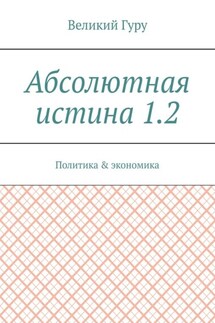Размышления женщины о геополитике - страница 21
2. To review their existing measures for the purpose of identifying those measures, in the form of legislative provisions or administrative practices related to taxation, that constitute harmful tax practices;
3. To remove, before the end of 5 years starting from the date on which the Guidelines are approved by the OECD Council, the harmful features of their preferential tax regimes etc.54.
The turning point occurred in the middle of 2000, when two international organizations – the Financial Action Task Force on Money Laundering (FATF) and the OECD – almost simultaneously published reports about offshore jurisdictions. The FATF published its Review to Identify Non-Cooperative Countries (June 22, 2000) based upon 25 Criteria promulgated by the FATF’s Report on Non-cooperative Countries and Territories (February, 2000). The OECD published the Report on Progress in Identifying and Eliminating Harmful Tax Practices (June 26, 2000) prepared by the Forum on Harmful Tax Practices. From June 2000, the FATF and the OECD had started issuing «black» and «gray» lists of «non-cooperative» jurisdictions.
The OECD acknowledged as a huge problem the practice of double non-taxation, as well as cases of no or low taxation resulting in multinational enterprises paying global corporate tax rates of just 1 or 2% due to sophisticated tax schemes including offshores. The OECD presumes that, «when reporting their global earnings, too many multinational companies can artificially (and legally) move their profits around in search of the lowest tax rates, often undermining the tax bases of the jurisdictions where the real economic activities take place and where value is created»55. The OECD estimated that in 2013 global corporate income tax revenue losses could be between 4% to 10% of global revenues56, i.e. almost a quarter of a trillion dollars annually57. The main reasons behind cross-border tax evasion were aggressive tax planning by some multinational enterprises, interaction of domestic tax rules, lack of transparency and coordination between tax administrations, limited country enforcement resources and harmful tax practices. The affiliates of MNEs in low tax countries report almost twice the profit rate (relative to assets) of their global group, showing how BEPS can cause economic distortions58.
Two pillars of international anti-offshore legislation
Current international tax agenda relies on two building blocks: tackling tax avoidance via the OECD/G20 Base Erosion and Profit Shifting (BEPS) project; and promoting transparency and exchange of information among jurisdictions for tax purposes.
Addressing base erosion and profit shifting
The OECD coined the term «base erosion and profit shifting» (BEPS) and focused its efforts on creating legal framework to deal with this problem. The OECD report «Addressing Base Erosion and Profit Shifting» states, «Base erosion constitutes a serious risk to tax revenues, tax sovereignty and tax fairness for OECD member countries and non-members alike. While there are many ways in which domestic tax bases can be eroded, a significant source of base erosion is profit shifting»59. The report analyzes the main causes of BEPS and identifies «six key pressure areas: 1) hybrids and mismatches which generate arbitrage opportunities; 2) the residence-source tax balance, in the context in particular of the digital economy; 3) intragroup financing, with companies in high-tax countries being loaded with debt; 4) transfer pricing issues, such as the treatment of group synergies, location savings; 5) the effectiveness of anti-avoidance rules, which are often watered down because of heavy lobbying and competitive pressure and 6) the existence of preferential regimes»







